
Rrembrandt (Portrait of his father in fur hat, 1630)
“What motivates the kind of spectacular, unique, unimiaginable, and gruesome cruelty that we see in America, which exists nowhere else in the world?”
Umair Haque.
“The right to express our thoughts, however, means something only if we are able to have thoughts of our own…”
Erich Fromm (Escape from Freedom)
“(The super ego is possessed of) -a senseless, destructive, purely oppressive, almost always anti-legal morality.”
Jacques Lacan (The Seminar of Jacques Lacan, Book 2)
“Freud recognized in the analysis of individuals that we are not made to keep secrets for a long time and that self-betrayal oozes from all our pores. That is also valid for races. Groups and nations unconsciously reveal what they would like to suppress. They give away what is concealed, denied and disavowed in their myths, folklore, religious traditions, customs and habits.”
Theodor Reik (Myth and Guilt: The Crime and Punishment of Mankind )
There has been a trend in western thinking that I equate with the “shrug”. Its the intellectual shrug. The emotional shrug. It is not total indifference, but only a kind of majority indifference. Usually it is cross pollinated with an intellectual or opinion ownership. Thats MY idea or opinion and I’m fine with it {insert shrug} whether you provide proof that it is wrong, or not. Ownership grants privileges. In discourse as well as in the material world.

Sabri Indrus
“Nevertheless, on this crossroads, “repetition” plays a central role, just as it does in the encounter demanded by the analysand. This is always first and foremost an encounter with oneself, with the stories and history in which each imaginary self came to appear and search further than the idea one has about oneself for answers to existential questions.”
Martine Fourre (Violence in Repetition)
It is worth looking at several things with regards to the state of American consciousness. Ed Curtin has a great short piece out last week that is about creativity and how society kills that creativity in the young. He quotes John Berger…“One is taught to oppose the real to the imaginary, as though the first were always at hand and the second, distant, far away. This opposition is false. Events are always to hand. But the coherence of these events – which is what one means by reality – is an imaginative construction. Reality always lies beyond – and this is as true for materialists as for idealists.”

František Drtikol, photography.
He also quotes Studs Terkel….in his book about work….
“This book, being about work, is, by its very nature, about violence – to the spirit as well as to the body.”
Labour is about violence. But daily life, recreation, is about violence, too. And at the heart of this violence is a capitalist system that has programmed repetitions into our alienated toil. It is able to do this only because our psychic development is almost built upon repetition. Now, if you take Hollywood TV as an indicator of a proprietor class values and anxieties, then it is worth pondering the role violence plays in entertainment. Two enormously popular franchises currently still running are Dick Wolf’s Law & Order, Special Victims Unit, and Major Crimes, created by James Duff. Interestingly Major Crimes is actually a spin off from an earlier shorter lived show The Closer. Both shows are about violence and both shows are highly repetitive. They are both sort of imagined fantasy versions of the criminal justice system. Both feature female protagonists. The matriarch for the Wolf show is Mariska Hargitay (daughter of Jayne Mansfield) and for the Duff franchise it is Mary McDonnell. The latter’s character, Sharon Raydor, and Hargitay’s Olivia Benson, both serve as the moral compass in a sense, for these franchises. Key secondary story lines involve both women adopting young boys. Both boys…Rusty Beck (who is 15 when adopted) for McConnell and Noah (who is a toddler) for Hargitay, are the spawn of sex offenders and murderers. One might wonder at the similarity of these plot points.
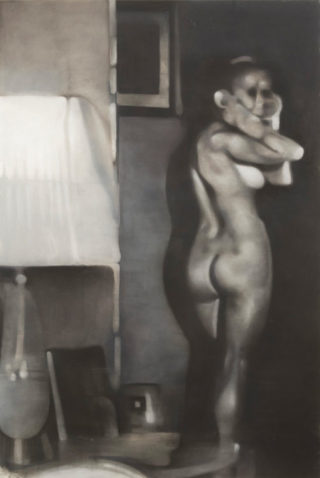
Johannes Kahrs
But it speaks to the ambivalence at the heart of such network product. The adoptions are about the need to rehabilitate the violence. But they are, of course, about far more than that. They are about an ambivalence overall in the representation of violence, and of love and tenderness in these fantasy worlds meant to show the virtue of criminal justice in America. There is no gratuitous and racist police violence in these shows. The question of mass incarceration is never touched, nor is the egregious class bias of sentencing and prosecutions ever touched. This is the liberal bourgeoisie as they want to be viewed. The McConnell character, in particular, is seen as a voice of moral clarity. She functions not unlike ‘Coach’ functioned in Friday Night Lights, developed by arch reactionary Jeff Berg. These shows are X-Rays of how the ruling classes want to be seen. Depravity and violence come from below, and special cases are plucked from the morass of underclass immorality and granted some version of redemption. Lip service is paid to the crimes of the rich, but mostly that is part of the central duplicity or contradiction of these shows. For the lawyers and cops are meant to both represent the working class (complete with a dislike of the hoity toity affectations of the rich) while at the same time condescending to that same working class. It is also clear that the forensics and profiling involved is at comic book levels. The assault on a teenage but underage girl is referred to as *pedophilia*, which it is not (it is Ephebophilia). It should be noted that there are small virtues stuck amid this dross — Raymond Cruz (who later was Tuco Salamanca in Breaking Bad, and Swayze in Get Shorty) is simply far too good an actor for this material.
The overriding message is that the system works due to the noble and selfless sacrifice of those officers of institutional oppression that saturate daily life in America. And, of course, over the course of fifteen seasons (for the Wolf vehicle, and six for the Duff spin off) there must be a LOT of violence in America. There is a pronounced insistence on how scary the world is, how essential are those protectors — that thin blue line — that keeps the teeming horrors(re: the poor) at bay — at least for the upper echelons of the bourgeoisie.

Vladimir Birgus, photography.
But this is obvious stuff. What is more interesting is the representation of violence, and how society — how ‘the audience’ clings to the repetitions of very rote storytelling. These are essentially soap operas in a sense. And one can’t fault them for that. Rather, its more worth examining how the audience needs recreations of violence in order to negotiate the violences of their own lives. For all Hollywood franchises traffic in ritual depictions of violence. Now daytime soaps, traditionally the province of housewives and drag queens, I guess, practices an extreme repetition of plot points centered around kitsch melodrama; this is the world of hyper sentimentality and the acting mostly corresponds to such writing. But the plots, if one can even call them that, move at a glacial pace that would make No Theatre envious.
The audience really has come to depend on the slowness and predictability. Plot surprises are not really surprises so much as one of several possible and anticipated twists in the story. The audience wants these shows to serve as companions; the soap is not meant to demand too much.
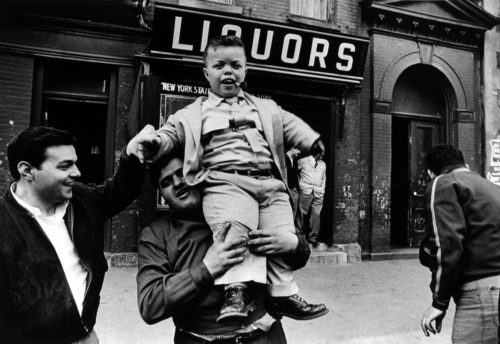
William Klein, photography. 1955.
The cop franchises listed above (and one could add the moronic and truly infantile Criminal Minds) are also, in another sense, companions. They do not demand much, the formula is repeated week after week. After week, after week after week. The above mentioned Criminal Minds (a show about profilers) is so acutely repetitive that if it were not for Joe Mantegna’s greying hair it would be all but impossible to determine what season one was watching. As a side bar note, Criminal Minds book-ends each episode with narrated quotes from *famous* authors. This means everyone from Shakespeare to Kahlil Gibran to Erich Seagull. This quaint touch, I guess, serves to garnish the endless ENDLESS assaults and dismemberments and blindings with a touch of social redemption by way of high falutin’ *literature*. The point is that such shows long ago ceased being about story. At least in the top text. The shows success is linked to a viewer friendly lack of difficulty, a sort of friendliness (workplace friendly, as I wrote about before) and familiarity that never wavers. The appealing workplace of these cop shows (and this is even true of military franchises) is like an ideal for the viewer who must live in the misery of real life workplace alienation and harassment.

Archangelo Ianelli
And as a small digression, the Michael Tolkin scripted drama (Escape at Dannemora), based on the real prison escape of two lifers from upstate New York’s Dannemora Prison was, over all very good. Well, Benicio Del Toro and Paul Dano were excellent. And the sense of place, of the suffocating de facto outside prison of Malone New York was captured with some clarity — at least visually. But remember, this is Ben Stiller directing. So the condescension to the working class was also evident and predictable. Patricia Arquette’s performance as the lonely self loathing prison employee (well, she managed the textile shop) was a sort of cartoon exaggeration (as was her husband) pointing to the stupidity of the working class. Those not smart enough to get out of Malone, or cities like Malone. Too stupid to not be born to famous industry parents and to not have to actually work to the opportunity to direct big budget mini series. But also…..there is this….
https://solitarywatch.org/2019/01/10/showtimes-escape-at-dannemora-left-out-torture-and-abuse/?fbclid=IwAR0zbeFkcrY_x_EVeMtOf5fmb1PjrJ6heJRfEBYxEWThXozJKMFGaeEbNt4
Now one might wonder at why that was not included?
But I want to return to the questions of the psychoanalytical nexus around repetition. How repetition functions now in the increasing repressions of advanced capitalism.

Raymond Cruz (Major Crimes)
“Differently put: how does one come to experience oneself as part of a given group whose membership could always be said to be circumstantial, contingent, less than essential? { } Two further issues will prove to be crucial in considering the above questions. The first concerns love, or, as is more befitting of psychoanalytic conceptualization, the fact of libidinal ties underlying a mass identification. The second concerns what we might refer to as the detour through others that qualifies many of our most powerful affective experiences. This brings to mind the (not infrequent) paradox whereby many people can claim that a sporting victory – an event in which they had no integral role to play and which in no way necessitated their presence – was one of the greatest moments in their lives. The same holds of the ‘identification power’ of large-scale collective events – the death of a loved national icon, for example – that prove such striking historical markers in the lives of their participants. Such affects need to be routed through an Other, afforded a minimal degree of externality. The consideration of such externality will also prompt discussion of the symbolic paraphernalia – the flags, songs and insignia associated with popular sports teams and political parties – that so frequently accompany and support the expression of collective emotion. This in turn poses questions concerning the apparent necessity of a degree of artificiality as – paradoxically – a condition of the ‘authenticity’ of emotion.”
Derek Hook (Six Moments in Lacan)
Now, a quick digression. The problem, and it has begun to seem insurmountable, with Lacan is that his introduction in English speaking countries (and several other languages, too, besides French) was via Zizek. And the Zizekian camp (including Jacques Miller). Not wanting to spend inordinate time on this, I will only say that along with Chomksy’s idiotic remarks about Lacan, the field of Lacanian psychoanalysis has lost much legitimacy in the minds of many. My only response is to suggest to people to read the original, and to not read Zizek or anyone associated with him. (that said, its very hard to avoid Zizek’s not cropping up somewhere in the footnotes of almost any English language reader of Lacan).
Back to our scheduled programming.
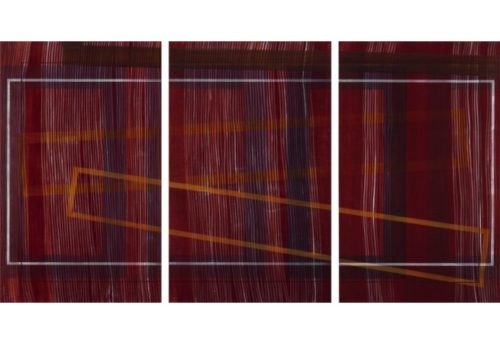
Betsy Kaufman
The role that mass cultural product plays is obviously linked to one’s notion of identity. How people believe they have come to know their identity. And then, by extension, how there has arisen the need for popular culture in the West to provide not just pleasure and entertainment (sic) but moral guidance. And I want to address, at the end of this, the role of violence. For there is something in much critical writing about film and TV and even prose, that misunderstands the role of representations of violence. (and yes there is violence and there is violence).
Identity has shifted, I think, from being primarily an unconscious product to one in which people consciously *shop* for various characteristics and qualities, the better to assemble a final self-created idea of themselves. But this latter process is not illusion. The unconscious is now front loaded with the artificial. And Hook notes that Freud in his study of mass psychology (where he borrowed rather heavily from LeBon) makes clear that crowd behaviour is a kind of emotional surge, one that includes the loss of clear intellectual discrimination, and also that the libido affixes itself in ways that encourage inflated feelings of invulnerability, but also of love — some form of, anyway. Hook adds…“This libidinal focus, which Freud will repeatedly associate with love of the father, will provide the much needed factor of a shared interest, of group cohesion, indeed, of mass identification.”

An Te Liu
The father is here a symbolic function. It is also the sedimented residue of historical time, a patriarchal time. For Lacan, the inscription of the name of the father, the symbolic function, the authority that writes the laws. And those laws are what the various cop franchises on network TV are still rehashing in a new modality of mass identification. And the adoption of two boy children by the ostensive matriarch of these sagas, the children of killers and rapists and sadists, is the retracing of the scene of the crime, an historical tracing. One that re-introduces the unconscious murderer we all see in ourselves when we are in view of our mothers. The Rusty Beck character is particularly interesting as he was a reluctant (!) boy prostitute who is coerced into his street life by an evil lawyer. (Get Jacques Lacan on the phone please, line six).
For Lacan the father symbol is the origin of prohibitions, but also ushers the subject into what he called the symbolic realm. The first prohibition is incest. It also establishes something like the shadow play of generational time. But the point here is that mass cultural product is not arbitrary because, well, nothing is really arbitrary. And these plot points in police procedurals (which are also, of course, dramas of the judiciary) are expressing something of an acute class anxiety on the part of the ownership class.

LAPD forensic photography archives.
My suspicion is that the idea of libidinal tie, for Freud, and even for Lacan, was far narrower then would make sense today. The mass identification with an idea or a leader is not a superseding of romantic love or attachment, but a blurring of what was once meant by romantic love. The blur is connected to both advanced capital and the Spectacle, the relationships to authority and instrumental logic, but also the erosion of that ability to yield to the love object in some fashion. So hard is the emotional and psychic carapace today. Our character armoring is not only, perhaps, much denser than in earlier stages of this society of domination, but its also of a different quality. The libidinal connection is frayed — connectivity is today mostly linked to screen habituations. Hence, the various cop franchises, not to mention Reality TV (an entire discussion onto itself), serve as something like surrogate mass experience. TV as the good parent. The crowd where there is no crowd. I remember reading that various events, broadcast on TV, had tens of millions of viewers, all watching at the same time. And yet also disconnected from each other. One watched knowing millions of others were watching, all effectively strangers. But that is experienced as somehow benign because of this sense of libidinal attachment to the screen.
Now, I return to another aspect of mass culture today that, for lack another description, I’ll call the shrug. (hat tip to Molly Klein). People can be informed of any manner of history or fact, questioned about their opinions or positions, and in the end, they simply shrug. It simply doesn’t matter. For its not about the content. Its more about the space occupied.
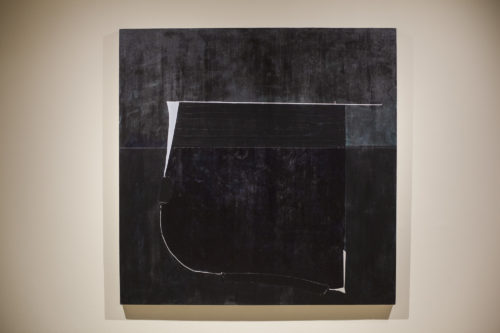
Torkwase Dyson
“This is not about sympathy or ‘fellow feeling’, stresses Freud – quite the contrary, no love is lost between the parties concerned – it is identification with the place that the other occupies. One ego here has perceived ‘a significant analogy in one point’ with another. Clearly then, this is a very different situation from a more encompassing identification with the image of the other in which a variety of the other’s traits are assumed. Identification here ‘is partial and highly restricted, borrowing only a single feature’ from the other. { } Within Lacanian theory such personal attributes only really start to function – as hallmarks of integrity, intelligence, leadership, etc. – once viewed from a very particular and historically located set of symbolic co-ordinates. Such perceived qualities are always-already mediated by the Other”
Derek Hood (Six Moments in Lacan)
“One can believe by proxy – it is enough that one extends one’s belief only to someone who is supposed ‘really’ to believe . . . My own unconscious belief is preserved by being delegated; it is repressed by the means of a proxy.”
Mladen Dolar (‘Beyond interpellation’, Qui Parle, 6)

Jacopo Pontormo (detail. Entombment or Deposition from the Cross)1525. Capponi Chapel, Santa Felicita, Florence
People today tend to transfer their libidinal connections. As Hood has it…“Of course, this does not always mean that we know precisely what it is in our personal histories we are celebrating, rejoicing or commiserating when we are swept up in the euphoria or disappointment of such public spectacles.” Added to this is the erosion of language skills. The formulaic and derivative quality of many people’s conversation, both written and oral, is staggering. There is also the appearance of what I called last post ‘the new unncanny’. One part of this is linked to the ambivalence surrounding the idea of self preservation. When there is so little self to preserve, what happens? One answer is found in a growing mutative variety of sado-masochism. But again, there is a feeling, I think, among the more both sadistic and masochistic that it is not ME who is experiencing this. It is all as if seen through an opaque cloth or sheet. A gauze in the windows of the mind. There is a kind of shrug, an apathy when faced with personal decisions. I suspect anything personal feels weighted and slows down all responses. And interestingly, Theodor Reik saw the uncanny connected with feelings of helplessness (that he had experienced during trench warfare in WW1).
When the authority, the *father*, is expressed or represented in mass cultural kitsch such as Law & Order SVU, when the culture decides (!) to agree that this or that TV show is really great, the sense of fungibility is acute. The accidental appears as inevitable. And that sense of transferring meaning allows for naked nepotism to be ignored, outright theft to be ignored, or bald faced lies. And at the same time, certain officially presented *crimes* take on exaggerated importance. And more, those officially acceptable crimes also are latched onto with exaggerated emotions, often with near hysteria. The lynch mob is always strangers, now its strangers sitting in front of their own screens, alone. It is worth noting, too, that Major Crimes has the feel of a very liberal Hollywood (and probably has a good many gay writers. Duff is openly gay, and the whole affair seems tinged with a certain near camp sensibility) while Dick Wolf is much more the butch Puritan moralist. Wolf shows uniformly exhibit a certain variety of tight lipped anality in the cast regulars. Virtue has its signifier in tight sphinctered pleasure in punishment. Wolf is the unconscious S&M guy. And yet, both franchises show enormous similarities.
Interesting too, as a passing observation, that so many of the DA characters, the regular or recurring ADAs or DAs are female.

Wang Xiaoqu
In any event…
“War neurosis continues the suffering of war in the form of traumatic symptoms characterized by repetition.This form of repetition serves no wish-fulfillment,progressively deteriorating the condition of the patient with no end in sight. Freud identifies this as the repetitive character of destruction. In the patient, it eventuates in social isolation; more broadly considered, it not only serves to weaken the social bonds that hold societies together, but also to deteriorate the human organism, taking form as a self-destruction that can culminate in suicide. Libido or sexuality has a reduced or vanishing role in this form of destruction, and the social bonds without which political life proves impossible are shredded in its midst.”
Judith Butler (Political Philosophy in Freud)

Weegee, photography, 1941.
Butler also, a bit later, sums up some of what Ive been getting at here. “So Freud tells us that to some degree the formation of a mass makes us stupid or, rather, people congregating lose their critical faculty in concert because they have relegated the task of thought to someone else, or perhaps to no one, letting the mass replace the individual, savoring self-loss over the travails of individuation.”
The digital crowd, one already disarticulated intellectually, already with eroded verbal skills and limited vocabularies, and already most comfortable with aggressors and aggression, unable to yield to any libidinal connections — this crowd, who ever assigns their narcissism to proxies, this is the voice of public judgement.
But I have the sense, and it is an acute sense, or feeling, whenever I return to the U.S., that some threshold has been breeched. A psychological threshold, beyond which one now encounters a culture whose pathologies and growing generalized autism, has revealed the contours of something in our (humankind) psyches that was there all along. And that one way this reveal was kept hidden — or perhaps not hidden, but dealt with, negotiated, was art. Without art, at least art as a committment to the difficult and, the sleepwalkers must more intensely deny their somnambulism. Perhaps I can better articulate this with a quote..from the preface to Piera Aulagnier’s collection of essays.
“Aulagnier underlines that the agency called *I* can only create a permanent self-construction when this is founded on a ‘prehistory’, followed thereafter by a ‘basic history’ which, in turn, can only be constructed in accordance with what the word-bearing mother has been able to communicate—or to cloak in silence. It is the task of the I to assure its permanence by means of an ‘identificatory project’ whose aim is to render meaningful the word process of which the infant is unaware, as well as the beginnings of the repressed childhood story, along with its present and its future. The primal process, as well as this ‘prehistory’.”
Joyce McDougall & Nathalie Zalzman

River Baptism, southern US. 1910.
I like that term ‘word-bearing mother’. In other words, the identificatory project is, from another perspective, again a shopping spree of and for the self. But in decline, the society provides less able word bearers. And the sense I have, as I mentioned above, is that we can know view this period from the dawn of language to perhaps six or seven or even eight. A period of sleepwalking. A period in which nothing is really remembered. It is only reconstructed, later, from eyewitness accounts, except that they were not exactly eye witnesses.
The identification with the aggressor is an important idea to try and clarify. At least if one is speaking of representations, of culture and art and narrative. For within this matrix of cultural displacements that is mass culture, there is nothing quite so unclear as how aggression is uncovered. For like the Olivia Benson adoption of the child of a sadist, rapist, and human trafficker, the alibi is not real. All stories are crime stories. But that particular story is the reflexive move to parent the killer we both think we are and that we want to be. I say *we* meaning the proprietor class that unconsciously reproduces its own guilt and narcissism again and again. The boy is *saved*. And as in Major Crimes the adoption is contested. For ‘they’ never can see how good we are. Ungrateful. The ruling class and its managerial minions hate nobody so much as the poor, as the victims of their indifference. Trump is more open about this than Clinton or Bush Jr was. The underclass is just in the way. Another curiosity of the new Hollywood is the film Vice, a cartoon version of Dick Cheney and Bush and Rumsfeld. Its like open mic night at a comedy club. Except everyone is, it appears, very serious.
Still, a culture in which (following Aulangier) the mother-child unit is ruptured, someway, is going to develop malformed relationships of all kinds. Most often today, I think, in that the mother or parental figure, cannot submit or yield to the infant. If not yield, at least must be experienced as receiving pleasure by way of its giving pleasure to the infant. All this prelinguistic activity takes the form of what Aulangier calleed pictograms. But the point is that we have the Advanced Capitalist Mother today. The mother who shrugs. Who is distracted, all the time. Literally, distracted, and the word-bearer function is short circuited.
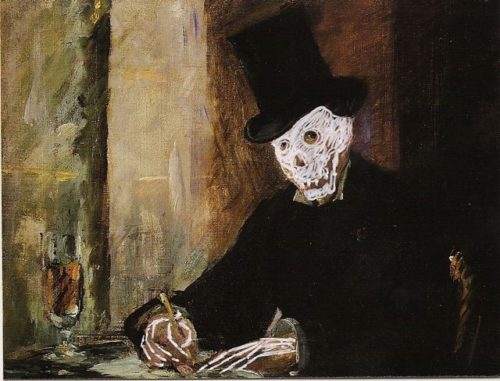
Tom Butler
“When listening to a psychotic discourse I discover with continual astonishment the extent to which it discloses a measure of ultimate truth that appears to be inaccessible to ordinary humans, perhaps because it is incompatible with the illusions we all maintain in order to invest life with meaning.”
Piera Aulangier
When Freud or Butler or any number of other thinkers discuss crowds they eventually discuss the unleashing of emotions and passions. In the cyber crowd the passions are diverted to secondary ritual crowds. And then surpressed more firmly, anyway. From spectatorship at sporting events to Yoga class the contemporary crowd is pre-neutralized. It is already divested of passion and is given permission for diluted forms of irrationality. But this is the advanced west. A place where 80% of people own computers and whose lives are intwined with screens in multiple ways. Passions are sent elsewhere. The entire cult of celebrity is driven by proxy emotions. The migrating of passion happens in a near continuous stream in terms of screens. The reality of internet porn for example is one. The sheer volume of this stuff is staggering. How is it a culture operates when the Kardashion’s have millions of *followers*?

Birin De
But there is the persistence of violence in narratives and in art. Even in Dick Wolf shows it operates with structural significance — of some sort anyway. The discussion of violence, or at least of representations of violence, is always started from the wrong place. There is no art, really, without violence. Without representations of it. In an ideal Utopian paradise, free of trauma, or at least a minimized trauma, the role of art in society would be unrecognizable. A society free of repression cannot be imagined, really. But its likely that societies have existed that were comparatively free of it. And so culture was a collection expression of something. That is an entire discussion, too. But in a society of total administrative domination, in an exploitive class based society of brutality and oppression, the role of art is bound up with violence. Both our own, and others. And whatever one defines as beauty is also bound up with violence.
The worst kitsch junk produced by Hollywood is the stuff that is consciously meant to be morally up-lifting. And that is a good portion of all that is produced. One can easily look at slasher films and decide, yes, this is sadistic titillation. But all that is produced, in all mediums, has links to violence. Alienated work is violence. The reified subject, alone, anxious, and afraid is a cauldron of violent emotion. But more to the point, there is a reason crime fiction and film are so durable. Without a recognition, on the part of the artist, that violence IS who we are, the product is undeniably more aggressive. Nothing is so aggressive as the sentimental. And as repetition is constantly recreating our trauma, so is culture reproducing our trauma. Only it is impossible to reproduce exactly or directly. In fact, all art of any substance flees from the direct and literal. The mimetic engagement is mysterious and very dense. But at the foundation it always links to the the scene-of-the-crime. To those pictograms Aulagnier posited. Prehistoric cave painting has only limited relation to what contemporary society produces. Likely those paintings had nothing to do with what one thinks of as art. Art is not a thing, anyway. It is a relation, a dynamic, and its meaning shifts over time.
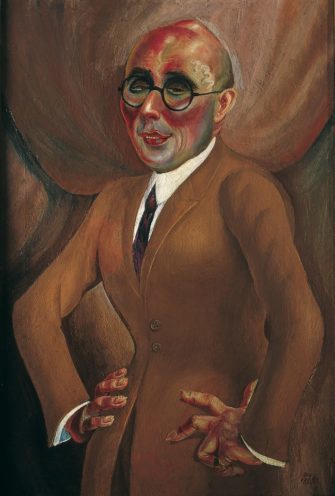
Otto Dix (Portrait of Jeweller Karl Krall , 1924)
But if one watches Hollywood Tv or film, it is apparent that is a society that cannot write certain things. The working class is totally absent in the creation of corporate owned culture. Writers, most actors, directors and producers all seem as if they have learning impairments. As if they have strange psychological maladies that prevent them from recognizing the language of emotion. What one sees, repeatedly, is the vaguely autistic conversations of a class separated from humanity. The class divide is now acute. And so Hollywood manufactures work in which the writers are writing what they *imagine* the real world to sound like. And actors more or less try to key in on the franchise style. One can watch Phillip Winchester in Law & and Order SVU and see he was born to be in a Dick Wolf show. The same with Bochco or David Kelley or whoever. Go to what passes for Indie cinema and you will see *indie* acting. Everything is a code. But I once taught a writing workshop with inner city gang kids. This was forty years ago. And it was a great group. And mostly this was theatre writing. And the kids would bring in stuff that they took, obviously, from their daily lives. One day I said, your assignment is to write a scene that takes place in the court of Louis the Sun King. They complained but agreed to do it. The results were the best work they had done. The court resembled south central, of course, but somehow that imagined world allowed those kids to find a deeper pain, a deeper sense of their reality. They stopped complaining and being angry and instead felt their suffering and translated that to the stage. So Hollywood writers today are imagining a world they don’t know either. And yet the results are shallower, not deeper. Why is that?
“In truth, we are incapable of dissecting into all its component parts the process by which we recognize psychological fact.”
Theodor Reik (Surprise and the Psychoanalyst)

Robert Grosvenor
The loss of close observation can be felt in most cultural product today. Some of this is not the loss of observation but the loss or reduction of what is being observed. A society obsessed with individuality must manufacture identity at an ever more accelerated pace. Only these are shadow identities. New marginalizations are created daily it seems. All the better to obscure the genuinely marginalized. All the better to keep discussions of class in the background.
What I describe is also tied in with Reik’s ideas of unconscious perception. Artists know this, even when they don’t know they know. But unconscious perception takes us back again to crime and violence. To our primal traumas. And it also suggests something that resists easy categorization.
“This is what so fascinates and horrifies us in the social discourse about the criminal, an individual dangerous not only by his “assault”, but as the holder of a secret relating to the collective. “
Paul-Laurent Assoun (tr. mine, so apologies to Mr. Assoun)
“Lacan said that there was surely something ironic about Christ’s injunction to love thy neighbour as thyself – because actually, of course, people hate themselves.”
Adam Phillips (London Review of Books)
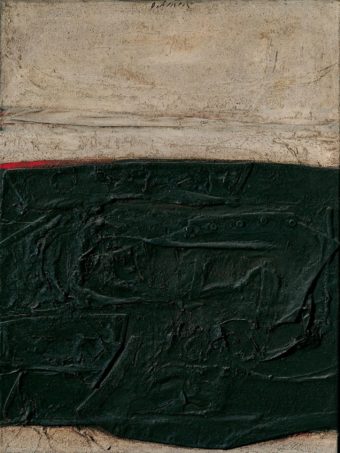
Karl Fred Dahmen
There are many examples in literature and film to tie into all this. Rob Weatherill notes that for Baudrillard the Oedipus tragedy is not about the father and mother as much as it is first about the detection of a crime. Only, per Weatherill here, it is Oedipus who discovers that he is the criminal.
The father cannot simply die, he must be murdered. When Karamozov said God is dead, therefore all is permitted, Lacan added, no, now nothing is permitted. Weatherill quotes this too before adding — as a statement of foundational symbolism…“the only good father is a dead father”. I am jumping around here because this is getting to be a rather long posting. I would like to take this up in the next posting however. Discovery is unrepentant. And self critique ruthless, if it is to have any value. The idea of hidden crimes is connected to the earliest infant experiences. One cannot avoid violence. We are violence itself. What can be change is cruelty and sadism. And exploitation. And humiliation. And the current President, in part, is experienced so negatively because his basic personality is predicated on the humiliation of others. Obama and Clinton may not have real feelings, remorse, or even a conscience. But Trump enjoys his crimes. (well, Hillary Clinton probably did, too). The ruling class as a class feels no remorse. And this is likely why there is such a demand for displays of remorse in the criminal justice system.

Jindřich Štreit, photography.
“The affect and the judgment that are connected with the consciousness of the motives and tendencies of an acting person are not considered his own psychical acts, but processes produced by a foreign power mysteriously affecting his consciousness.”
Wilhelm Wundt
One aspect of contradiction today, for the public, is that within this administered world there can be no room for something that is fundamentally outside classification. So the culture that is praised is the culture that can be classified. And the conscious creation of work, today, artistic work, creative work, is going to be work that eliminates beforehand anything ambivalent. The implications for this, for the removal of opposing thoughts or interpretation is far reaching. The intransigent binary model in the politics of the U.S. speaks to this. Soon people will come to accept that its all just ONE party. Instead of this being a criticism, it will be praised and welcomed. The growing trend to normalize fascism is the product of a class (and now an entire society) that wants things to be clear and simple. The public will voluntarily stop having children (as the responsible thing to do) and they will voluntarily stop travelling, and they will wholeheartedly embrace further limits on civil liberties. They do this because actually having freedom of thought will be experienced as a dangerous threat to personal safety.
Again, to donate to this blog you can go to the paypal button at the top of the page. Many thanks to those who have already done so.

Give up on that old form of sorcery we call psychoanalysis, John. Your sad devotion to that ancient religion has not helped you conjure up a viable path forward for anyone or given you clairvoyance enough to see the true threats facing the world.
I wrote a long, somewhat incoherent comment but it got captcha-ed or decaptcha-ed. Anyway I want to say thanks for writing these journals–I’m working my way back through them all, and I just bought _Sea of Cortez_, some collected plays of yours, and–wow. If I try to gush, captcha will choke me again so–I like ’em. A lot. Thanks for writing.
@motti….
“sad” form of sorcery. Hmmmmm.
@motti
I find your lack of faith in psychoanalysis disturbing